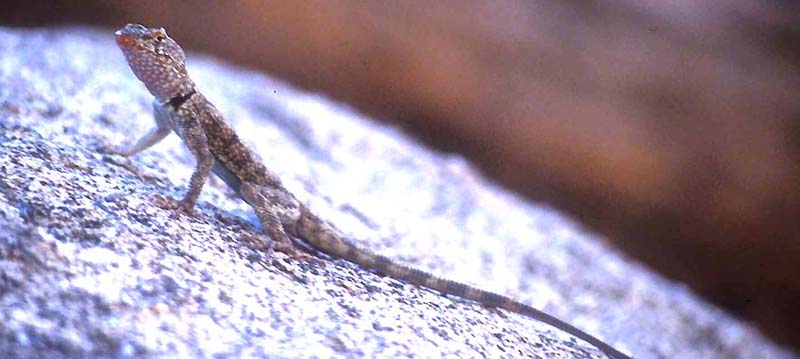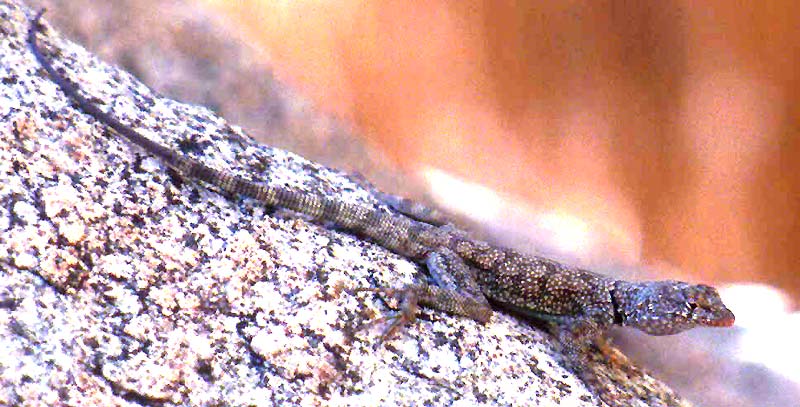 |
 California has only one rock lizard: Banded Rock Lizard Petrosaurus
mearnsi (all photos on this page). It occurs only in rocky gorges on
the eastern (desert) side of the peninsular range from San Gorgonio Pass,
Riverside Co., south into northern Baja California. All these photos are
of just one individual that Dan Singer first spotted in Borrego-Palm Canyon,
Anza Borrego SP, San Diego Co. There are two other species of rock lizard
on the Baja California peninsula (according to Stebbins 2003).
California has only one rock lizard: Banded Rock Lizard Petrosaurus
mearnsi (all photos on this page). It occurs only in rocky gorges on
the eastern (desert) side of the peninsular range from San Gorgonio Pass,
Riverside Co., south into northern Baja California. All these photos are
of just one individual that Dan Singer first spotted in Borrego-Palm Canyon,
Anza Borrego SP, San Diego Co. There are two other species of rock lizard
on the Baja California peninsula (according to Stebbins 2003).
I thought the Banded Rock Lizard (sometimes called "Mearn's Rock Lizard" to distinguish it from another, more southern, subspecies) was a really delightful lizard. The formal literature gives lizard lengths as snout to vent only (~3-4.5 in in this species per Stebbins 2003) but the tail is quite long. I think the whole lizard might be a foot in total length. The legs, toes, and tail are all very long and flattened to move about the huge boulders it inhabits. Sanborn (1994) describes it this way: "By keeping all four legs outstretched, the banded rock lizard can move swiftly across the surface of a rock, including the undersides and vertical sides of large boulders. As the lizard pulls its limbs toward its body, the sharp, slender claws on its toes grip the rough surface. In this way, it can hold its body and limbs much closer to the rock that other rock-dwelling lizards can. The tail seems to act as a counterbalance, and as the lizard moves across rocky surfaces, it appears to waddle." He also says that "these lizards seem to be very curious and can be approached rather closely. When frightened, they retreat to a narrow crevice or dart to the other side of the boulder." Our experience was similar. By moving slowly, we could approach closely, but once the lizard got concerned, it skittered away to the far side of the boulder very quickly! Beyond the long, rangy shape, the head has a quaint cuteness about it; from the side or back, it rather recalled a "kermit-the-frog" muppet in aspect. And then there is the exquisite spotted pattern on a sandstone background in interlocking bits 'cemented' by broad black squiggly bands. All in all, a really cool lizard.... |
 |